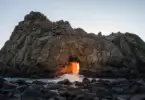By Anthony O’Flynn
Guest Writer for Wake Up World
The chakras are our energetic blueprint. The knowledge of the chakras is a critical component to genuinely understand the nonphysical energy body. To understand who we truly are, we need to investigate this component of our being that is normally invisible to the naked eye – know thyself.
The word chakra itself means wheel in Sanskrit. This is due to the fact that the chakras are circular in shape. The chakras, however, do not spin. The nadis and the spokes or petals as they are sometimes called are fixed. It is the energy or prana that spins or moves through the chakras. An excellent comparison is the acupuncture points from Chinese medicine. These specific points are fixed yet it is the chi or the life-force that moves through the meridians.
[pro_ad_display_adzone id=”110028″]
The chakras are much more than just energy centres. The 7 chakras are complex in nature. They are responsible for maintaining physical, emotional, mental and spiritual well-being. In fact, the condition of the aura and the chakras will have a direct correspondence to a person’s health as well as their emotional and psychological state. Although there are seven major chakras, numerous secondary chakras have specific and different functions.
They represent the complete spectrum of human consciousness. These states can fluctuate depending on the various situations we experience and how we integrate our awareness into our experience. They are our interface to the universe and our potential for evolution and inner transformation.
Muladhara Chakra – root support in Sanskrit
This chakra is related with the Earth element and consists of 4 spokes. Muladhara is essentially the battery of the being and is responsible for vitality. Many people who suffer from low energy levels are often disconnected from their inherent source of vitality, the Earth. People who work in big cities, in tall buildings, with air-conditioning are fundamentally deprived of prana, the basic life-force. By connecting with the Earth, even the simple act of walking on the beach (barefoot) will energise this chakra.
As this chakra is the root, it will directly influence the ‘glow’ of the other chakras and the aura in general. It is the foundation and the base level of our energetic being. It is also the home of kundalini shakti, the primordial energy that although dormant in most people, once awakened rises through the energetic column known as sushumna nadi creating transformation and spiritual awakening as it fuses with the crown. This awakening is the union of energy and consciousness, which is the fusion of the feminine and masculine to produce states of samadhi or cosmic consciousness.
Psychologically, the energy of fear and greed is located here. This creates a fight or flight mentality. Muladhara is also responsible for the overall integration on the physical plane.
This chakra is the location of some of the most basic instincts such as survival, shelter, eating and sleeping. In comparison to the upper chakras, muladhara is a more primitive form of consciousness but highly significant for maintaining life. Physically this chakra controls the bones and the teeth, the dense aspects of our being and is also related with the sense of smell.
Svadhisthana chakra – one’s own dwelling place in Sanskrit
This chakra is related with the water element and consists of 6 spokes. Svadhisthana is a highly significant chakra as approximately 80% of humanity is dominant in this form of consciousness. Similarly, approximately 75% of this planet is water. This chakra is related to the collective consciousness and incorporates many of our social norms, ‘the done thing’.
As svadhisthana is related with the water element it will take the shape of any receptacle that it is poured into. If you pour water into a glass, it takes the shape of the glass. If you pour water into a pot, it takes the shape of the pot etc. This is notable as it reflects the lack of distinct individual values and beliefs that define svadhisthana. This chakra is therefore the crowd, the masses or the perceived norm. Opinions and beliefs are malleable to ‘fit in with the crowd’. If everyone is talking about the football, the person who thinks at the level of svadhisthana will want to fit in and then display an interest in football. This consciousness also reflects the need to ‘keep up with the neighbours’, be respectable and conform.
This way of being has given rise to the derogatory term ‘sheeple’ by those in the awakening community. The global elite exploit this form of consciousness as people who perceive reality through this lens just ‘go with the flow’ and are in fact afraid to be different or adopt an attitude that goes against mainstream beliefs. This is the core of the manipulation and control because this consciousness is simply not able to evaluate control systems and methods of manipulation. Judgment is unproductive as when this consciousness is dominant it is simply not possible to decipher the orchestrated methods of global control and deception.
The Roman phrase ‘give them bread and circuses’ summarises the distraction and entertainment-celebrity-gossip consciousness of today, which is precisely designed to keep humanity locked in the lower of frequencies of existence. Moreover, the sense of taste is the sense governed by svadhisthana, which is typified by fashionable ‘foodie’ culture and further reinforces the point. This reflects the pleasure seeking nature of svadhisthana.
Breaking free of these control systems requires a rising of consciousness to begin to understand the powerful indoctrination that humanity currently endures and having the ‘eyes to see’.
Svadhisthana is also related with the moon, sexuality and reproduction hence the relationship to the genitals and the tongue. A sexy, charismatic or charming person is a definitive characteristic of svadhisthana chakra. Even forms of dance that involve sensual movements of the pelvic area is a reflection of the consciousness at this level.
When most people consider their personal issues and emotional problems, they are predominantly on this chakra. The water element is quite heavy and thus depression, feeling dejected, self-pity and sadness are all related to impurities or imbalances in this chakra.
Manipura chakra – city of jewels in Sanskrit
This is a reference to the dazzling aspect of manipura as it is related to the fire element and consists of 10 spokes.
Manipura is the antithesis of svadhisthana as it is related to the Sun and the qualities associated with leadership, authority, power and self-confidence. Svadhisthana is the crowd. Manipura are the leaders of the crowd. This consciousness assumes the role of leadership, the emotional and psychological connection to success and ‘making it’ as well as positions of influence and power.
In essence, all personal development teachings to be more motivated, productive, dynamic, confident and to believe in oneself are related to this chakra. This is an expression of the fire element which embodies these qualities.
However, the lower emotions of manipura include anger, frustration, rage, arrogance and egocentric behaviour. This is an expression of the disharmony of the fire in an impure state. The precision and control of martial arts is also related to this chakra, which is a reflection of the legs being connected to this sphere of force. The sense of sight is also related to manipura chakra.
Importantly, the lower three chakras are not ‘bad’ as there is only an issue if there are impurities, blockages or the chakras are imbalanced. Otherwise there will be an ongoing harmonious experience. Yet all negative states of consciousness and emotions can be attributed to these 3 lower energy centres.
Anahata – unstruck in Sanskrit
This refers to the quality of the soul that is indestructible or eternal. Anahata chakra has 12 spokes and is related to the air element. The numbers of spokes the chakras have is significant as there is a relationship between the number of spokes of the chakra and the consciousness that is embodied. For example, in regard to anahata, the 12 astrological signs, the 12 months of the year, the 12 hours of the day, the 12 disciples of Jesus, the 12 different names of the Sun god Surya (and there are many others), all have a relationship to the heart.
The consciousness of the heart is also considered a key aspect of the ongoing planetary Paradigm Shift. Many mystics claim that this is the cosmic plan for humanity and the future earth will be characterised by love and compassion.
Yet the prevalent issue of heart disease in today’s society although can be related to dietary and lifestyle choices is still a disharmony at the level of the physical heart.
Significantly, the etheric body and the chakras control the physical body. If there is a disturbance, weakness or blockage in the subtle bodies, this will eventually be reflected in the physical body. Generally, the deepest and most complete way of healing an emotional issue is to work directly on the non-physical aspect of our being. Although this is not true in every situation as once a health issue has manifested in the physical body, the health of the physical body also needs to be addressed. The cause of the issue itself can be due to an emotional imbalance, which will originate in the astral body at the emotional level and then filter through to the physical body. This is definitively the body-mind connection.
The consciousness of the heart is always beautiful. These qualities of tenderness, softness, humility, self-abnegation, compassion, forgiveness, empathy, affectivity, self-acceptance, pure unconditional love and deep inner peace are all wonderful aspects of anahata chakra.
There is also a form of deep refinement, a certain gracefulness and a deep harmony that reflects an individual with this resonance. The connection to the air element also gives an energetical lightness to someone who is dominant at this level. The arms and hands are related to the heart and this correlates with the sense of touch and the practice of various forms of healing through the hands which all correspond to anahata chakra.
Anahata chakra is also significant as there are 3 chakras above and 3 chakras below. This is the middle way or middle path of the heart that unites the lower and higher aspects of our being.
The chakras also comprise the polarity of the universe – the plus and the minus, the solar and the lunar, the yin and the yang. Thus in the case of the heart, the capacity to feel love, to understand and to receive love is yin. The ability to emit love, to produce it and to manifest love is yang. This means the chakras needs to be balanced and centred between the 2 poles of the universe for deep and profound harmony.
Visuddha – especially pure in Sanskrit
This chakra is related with the ether, which is the fifth element and has 16 spokes. The number of spokes or petals is significant as this is an indicator of the complexity of consciousness. As the chakras move higher in the body they also become more complex in their scope of consciousness.
Visuddha chakra is related to time and space. This is the true nature of reality that transcends the experience of time from the limited perspective of past, present and future. At this level, time is experienced as a single duration – the eternal now. Visuddha encapsulates the vastness of space, the cosmos and the expansion of the universe. This elevated sphere of consciousness also includes aesthetics, sacred geometry – and a deeper form of inspiration that can unlock the mysteries of the universe and discover the true laws of reality. Some classical music also has the frequency of Visuddha, which has a pristine and sublime resonance.
This level of consciousness is rare on this planet at this time, yet traces are still apparent such as the exceptional aesthetic qualities and precision of the Great Pyramid at Giza.
As this chakra rules over the thyroid and parathyroid glands and as thyroid health issues are common today for women over 40, it is important be aware of the significance of this energy centre for maintaining good health in this area of the body.
The purity of visuddha chakra filters through to an individual’s actions and the type of environments they frequent and the lifestyle they adopt. Clairaudience is another aspect of visuddha as hearing is the sense connected to this energy centre. Other paranormal powers also include the ability to access the akashic records. The throat chakra also governs the power of speech from a very elevated perspective.
Ajna – command in Sanskrit
This chakra is related to the mind and has 96 spokes although is it often depicted with just 2 large petals. This is related to the fact that it is the final level of polarity (yin and yang) before connecting to unity consciousness.
Ajna chakra is a truly elevated sphere of consciousness that few can truly embody in today’s society. The power of ajna is to offer a superior form of intellect that is consistent with that of a genius. Examples include those people that can flick through a telephone book and remember the numbers of each person, a chess player that can play numerous games of chess simultaneously and win, as well as those that can learn and retain knowledge quickly, all resonate with the power of the third eye.
Ajna chakra also contains the power of clairvoyance, telepathy and a form of ‘knowing’. Some of the great prophets of history such as Nostradamus had their gift from the opening of ajna chakra. The third eye has this capacity for one to be a seer or a visionary – the ability to see with the mind’s eye.
The assumption that as ajna is connected to the mind that all mental health issues are related to this chakra is incorrect. Each chakra has an aspect that is connected both to the emotional body as well as the mental body. So it is best to harmonise the chakra that is relevant to the specific emotional or mental issue. Although, because of its superior nature, ajna does control the chakras beneath it.
Sahasrara – thousand-petaled in Sanskrit
Although sahasrara is not technically structured in the same way as the 6 other major chakras, it is still classified as one of the 7 chakras. This is because sahasrara is not a wheel but it covers the top of the head and is shaped like a steeple pointing upwards, similar to the ‘crown’ of Buddha.
Sahasrara is the pinnacle of human evolution. Its activation produces states of samadhi or cosmic consciousness in the yogic tradition. This opening creates what is known as enlightenment, moksha, mukti, sartori, self-realisation and is the gateway to transcendence to experience the true nature of reality.
The consciousness of sahasrara is characterised by lucidity, detachment, sacredness and a higher state of consciousness. Sahasrara is the sum total of all the chakras. The enduring symbol of the beam of light fusing with the prism and then dispersing into all of the colours of the rainbow succinctly represents the quality of this chakra. This is because sahasrara has no polarity, it is oneness and is unity consciousness. Sahasrara embodies the ultimate oneness of creation and eliminates the role of the ego that creates the illusion of separation.
The subject of the chakras is a vast one. Human beings are a direct carbon copy of the Universe. The quantum physics understanding that the part is in the whole and the whole is in the part reflects this wisdom. Ultimately, to fully embody and know the 7 chakras is to know the universe and experience the complete spectrum of consciousness that is the potential of humanity.
This exclusive article first appeared in New Dawn Special Issue V11N4 and is reproduced here by permission of the publisher. In May 2019, New Dawn magazine celebrated 28 years of publishing cutting edge, original articles on everything from censored history, alternative health, cover-ups and conspiracies, to the paranormal and the search for meaning and purpose. Ancient Wisdom, New Thinking – check us out at www.newdawnmagazine.com.
About the author:
Anthony O’Flynn is the director of the Paradigm Shift Summit – a gathering celebrating the dawning of a new Earth and the awakening of humanity. He is also the director of Holistic Yoga and Meditation – a unique spiritual school to transform your inner landscape and live an inspired life. For more details please visit paradigmshift.com.au and holisticyoga.net.
[pro_ad_display_adzone id=”110027″]







